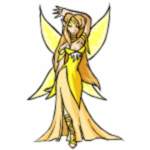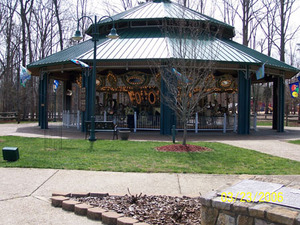Like all poetry, Edmund Spenser’s The Faerie Queene delights in its use of symbolism to reveal the moral struggle of his characters and the journey toward enlightenment they must seek to fulfill their destinies. Theme and character are two important tools in which Spenser delivers his message of spiritual enlightenment and religious beliefs. Spenser uses the motifs of light and darkness through setting and character to symbolize the spiritual journey undertaken by the poem’s main character, the Redcrosse Knight.
In all forms of literature, setting is extremely important in recreating a universe in which characters are able to enact their physical or spiritual journeys. Symbolically they can define character, time, or the obstacles that both inhibit and challenge characters to complete their journeys. In the Faerie Queene, Spenser creates a universe that challenges and serves Redcrosse Knight’s spiritual journey toward enlightenment. Settings that symbolize spiritual enlightenment or degradation form the dual aspects of fairyland, the dreamlike universe that composes the world stage in which many of the poem’s adventures take place.
Dark settings often symbolize places in which evil exists. Errours’ Den, the dark cave the heroes first encounter on their adventures, provides a place in which the monstrous half-serpent can dwell. Una is the first to recognize this, when she warns the knight that “the peril of this place/I better wot then you…” (Canto 1, 109-10). Spenser sets up the duality between good and evil that exists in fairyland by revealing the contradictions between the Redcrosse Knight and the setting. In Stanza 14, the cave is described as a “darksome hole” (120), but once the knight enters the cave, his “glistring armor” creates enough light for him to see through the darkness. The contradiction between dark and light is apparent in this passage, thus setting up the symbolic paradigm that is woven throughout the poem. By assigning moral attributes to the monsters’ dwelling, Spenser is able to reveal the tension that exists within fairyland between good and evil.
This tension forms the landscape on which they must be resolved. Since the knight’s quest is a spiritual one, it is significant that he do battle against the forces of evil in order to fulfill his spiritual destiny. Errours’ den, thus, is an opportunistic setting for which the knight and Spenser to set the stage for that spiritual journey. Another example of setting symbolizing darkness or evil occurs when the Redcrosse Knight is taken hostage by the giant Orgoglio in his dungeon. Spenser ascribes the same attributes of evil to the dungeon as he does with Errours’ Den in Canto 8, Stanzas 38-40. Here, the dungeon is a place of “balefull darknesse” (338), a “deepe descent, as darke as hell” (350), and “darknesse fowle” (152). While the evil monstrosity guarding this dungeon, Orgoglio the giant, dwells outside the dungeon, a far greater evil exists within: despair.
The Redcrosse Knight’s imprisonment in the dungeon occasions a visit to the House of Holiness, in which he must undergo physical and spiritual cleansing before he can continue on his journey. Again, the knight’s experience in the dungeon pushes him forward on his journey toward spiritual enlightenment. While both Errours’ Den and the dungeon represent settings in which evil can and does exist, they also offer the knight an opportunity to fulfill his quest. By conquering these regions, in a sense, colonizing them, he brings himself closer to spiritual fulfillment.
Settings that represent good rarely find expression in fairyland. Here, light has only one and true source in heaven. In Canto 10, when the holy man, Contemplation, asks why he has been interrupted during his prayers by Mercie and the knight, Mercie responds:
What end (quoth she) should cause us take such paine,
But that same end, which every living wight
Should make his marke, high heaven to attain?
Is not from hence the way, that leadest right
To that most glorious house, that glistreth bright
With burning starres, and everliuing fire…(442-47).
Here, Heaven is symbolically described in terms of light: “glistreth bright,” “burning starres,” “everliuing fire.” Heaven is the only setting in The Faerie Queene given such attributes, contrasting that with fairyland in which dark places exist, thus offering evidence of the presence of evil. The spiritual quest on which the Redcrosse Knight has begun can only end until he himself is shed of all sin. When Contemplation reveals to him the city of Jerusalem, which stands in for Heaven, the knight observes that “this bright Angels towre quite dims that [tower Panthea in Cleopolis]” (Canto 10, 522). The knight’s recognition in the contrast between Cleopolis, which is the kingdom in which Gloriana, the Faerie Queene, is sovereign, to Heaven becomes the first step in the completion of his spiritual journey. Only the true source of light can come from heaven, while man-made objects, i.e., the tower, can only reflect that source. This recognition provides the knight with the impetus to follow in the path toward that light and fulfill his destiny of becoming a saint.
Time is also given moral designations, providing more evidence of the good and evil that exist in The Faerie Queene. One important example of this is how Spenser symbolically uses night to disguise truth through duplicity. This occurs twice in the poem. The first instance occurs when Archimago, the evil wizard, tricks the knight into believing that Una has been morally unfaithful by creating a Spright through his magic arts. The scene occurs at night, and has a dreamlike affect on the victim. Spenser reveals his symbolic intentions in Canto 2, when he writes: “Those two he tooke, and in a secret bed,/Covered with darknesse and misdeeming (deceiving) night” (25-6). Night, thus, becomes a setting in which duplicity reigns supreme. The second example of night used for symbolic purposes occurs later when Duessa, the evil witch who waylays the knight, turns to the Goddess of Night after the knight kills Sans-Joy during a joust:
Where griesly Night, with visage deadly sad,
That Phoebus chearefull face durst never view,
And in a foule blacke pitchie face durst never vew,
She findes forth comming from her darkesome mew,
Where she all day did hide her hated hew” (Canto 5, 171-76)
Here, Spenser uses derogatory terms to describe the Goddess of Night and the realm in which she exists. It is significant that Spenser plays on the theme of blindness in this passage. Night provides the opportunity to hide truth from sight. In this case, Phoebus is never able to view Duessa’s duplicity because night shields Phoebus from “her hated hew.” Duessa is able to be duplicitous because of her alignment with Night. In stanza 21, Spenser reveals the contrast between morning and night through the Goddess’ reaction to Duessa when she sees her in her duplicitous form. After seeing Duessa adorned in bright gold and jewels, the Goddess “greatly amazed at the sight/For never did such brightnesse there appear” (184-85), retreats back to her cave, until Duessa implores her to stay. The Goddess’ reaction is understandable given the mythological source to which Spencer refers. In Stanza 22, Duessa refers to the Goddness of Night as “auncient Grandmother” (191).
The footnotes in the Longman Anthology of British Literature states that Duessa is recalling “that Jove was raised in a dark cave to escape being eaten by his father, Saturn,” thus implying that “darkness gave birth to Jove” (p. 843). In this context, then, Duessa’s plea to the Goddess of Night to seek revenge for the deaths of the Sans brothers is illuminating. Night is “mother [bee] of falshood, and root of Duessaes race” (240-41), and, therefore, will offer protection to Duessa much in the way she provided it for Jove. Night, thus, is the source of all duplicity and shame. Since both Duessa and Archimago are aligned with Night, their affinity toward duplicity symbolically reveals how darkness blinds or misconstrues the truth.
Both Duessa and Archimago become formidable adversaries in the heroes’ quest for spiritual truth. Spenser’s characters are archetypes that form the same rubric in which he creates the poem’s settings. They represent on many levels the good and evil that exist in The Faerie Queene. Again, Spenser turns to the symbolism of light and dark to show the contrasting moral qualities between his characters. Characters that are evil and duplicitous are defined by their close association with darkness. The monsters in the poem are either located in dark places or near them, such as Orgoglio the giant.
The dragon is defined in similar terms. When the knight does battle with the dragon, Spenser makes the observation that “[the dragon’s] deepe devouring jawes/Wide gaped, like the griesly mouth of hell,/Through which into his darke abisse all ravin fell” (Canto 11, 107-08). The dragon’s mouth represents the doom awaiting the knight if he falls again from grace. Archimago and Duessa, due to their affinity toward Night, are capable of shapeshifting, taking on false appearances that allow them to lead the heroes astray. Their ability to hide their true nature parallels that of night’s ability to hide duplicity and shame in the cover of darkness.
By contrast, the heroes of the poem are associated with light, and therefore, are bearers of truth within that darkness. One repeating motif within the poem is how each of Spenser’s heroes are capable of bringing forth light, either through their armor or their physical presence. In Canto 1, the Redcrosse Knight’s armor glistens with its own glow, thus providing light when he enters the dark cave of Errours’ Den. The knight’s armor is mentioned again in Canto 11, when he does battle with the dragon. As the dragon sits upon the hilltop, he “descride/Those glistring armes, that heaven with light did fill” (43-5). Again, the knight’s armor is a reflection of heaven, or the knight’s own spiritual purity.
Spenser repeats a variation of this line in Canto 10 when, describing Fidelia, the daughter of Dame Caelia, the woman who runs the House of Holiness, he writes: “Like sunny beames threw from her Christall face,/That could have dazd the rash beholders sight,/And round about her head did shine like heavens light” (106-07). Similarly, Una, who is a spiritual guide for the knight, has a beauty so bright that when she removes the hood which shields her true nature, “the great eye of heaven shyned bright,” (Canto 3, 34). Again, light is associated with heaven.
All three examples reveal the purity of the characters and provide a stark contrast from the evil characters that exist in The Faerie Queene. Ironically, Una goes throughout much of the poem shielding her face. The contrast between Una’s face and the black hood she wears to keep it hidden provides a striking image in its contradictory nature. This parallels Prince Arthur, who keeps diamond shield covered because it is so bright that anyone who stares into it is stricken dead. These two examples parallel Archimago and Duessa’s use of disguises for concealment. All four seem to, for varying reasons, want to hide their true natures or identities.
The Redcrosse Knight, likewise, has a dual or duplicitous nature in that he is presented as an elf, when in truth, he is the mortal Saint George, stolen from his true family and brought up in fairyland. But, unlike Archimago and Duessa who shield their true identities for evil purposes, Una and Prince Arthur do so to protect themselves or others. They are aware of their true natures and therefore understand that the truth can have powerful applications, particularly in a world where truth does not always immediately reach its targets, i.e., the Redcrosse Knight. The knight, on the other hand, is completely unaware of his true identity. His quest, therefore, is not only a spiritual journey but a journey of self-discovery, as well.
It is only by undertaking this adventure, and going through the steps toward sainthood, that the truth is revealed to him. When the knight is able to embrace the truth, it shines within him and not simply through his armor: “Through passing brightnesse, which did quite confound/His feeble sence, and too exceeding shyne./So darke are earthly things compard to things divine” (600-03). While the theme of identity and duplicity run concurrent throughout the poem, Spenser exposes a marked contrast between his villains and his heroes, and does so by symbolizing light as revelation and truth.
The Redcrosse Knight’s journey takes him from ignorance to truth. The dangers and obstacles he encounters along the way represent the ignorance he must struggle to overcome, while Una, his guide, represent the quest for truth he longs for in order to fulfill his true destiny. By using the symbolism of light and darkness, Spenser is able to convey his message of spiritual fulfillment and maturation through the fantastical journey his characters undertake. In this way, The Faerie Queene is a religious parable.




